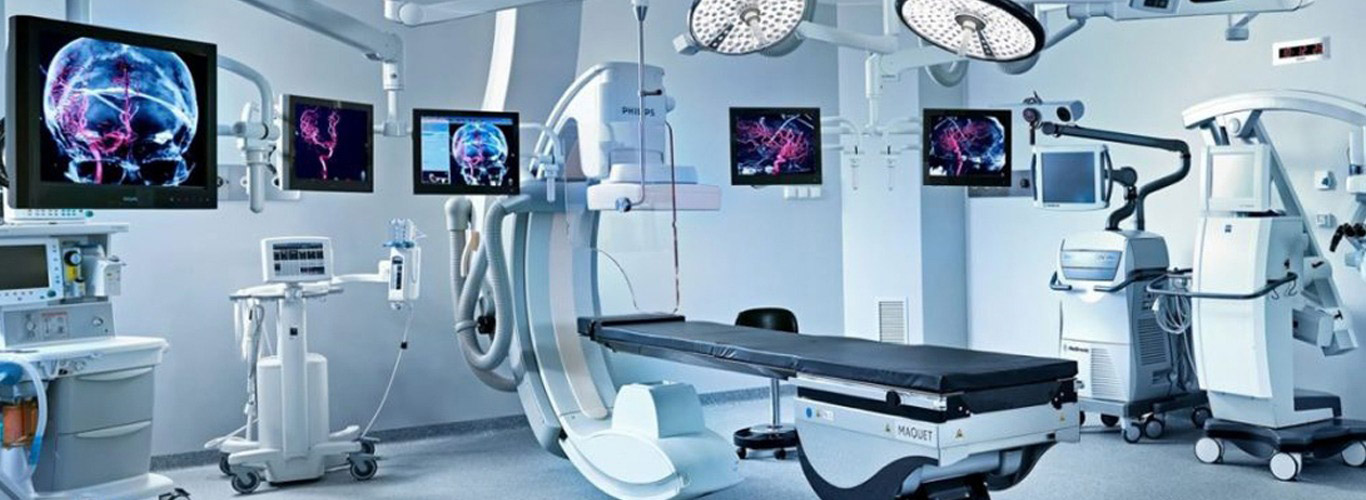Top Trends in the Global Medical Equipment Market: What's Driving the Industry Forward
Posted on 29/04/2024

Medical devices are a critical component of healthcare and include an enormous array of products used to treat, diagnose or monitor various health conditions. The global medical equipment market has evolved rapidly over the past decade, driven by technological advancements, changing demographics and changing healthcare needs worldwide. As healthcare systems strive to improve patient care, enhance efficiency, and reduce costs, the medical equipment industry plays a pivotal role in addressing these challenges. Here, we'll explore some of the top trends that are currently driving the global medical equipment market forward.
Digital Transformation and IoT Integration:
The integration of the Internet of Things (IoT) into medical equipment has been a game-changer. Medical devices are now equipped with sensors and connectivity features that allow for real-time data collection and transmission. This data can be used for remote patient monitoring, predictive maintenance of equipment, and more efficient healthcare delivery. As a result, healthcare providers can offer better patient care and reduce operational costs.
Telemedicine and Remote Monitoring:
Telemedicine has emerged as a game-changer in healthcare delivery. The integration of medical equipment with telehealth platforms has enabled remote consultations and continuous patient monitoring. Patients can now manage chronic conditions from the comfort of their homes, reducing the need for frequent hospital visits. The COVID-19 pandemic has accelerated the adoption of telemedicine, making it a cornerstone of modern healthcare.
Remote monitoring devices, such as wearable health tech and home diagnostic kits, have become increasingly popular. These innovations improve patient access to care and reduce the burden on healthcare facilities.
Advancements in Imaging Technology:
The field of medical imaging continues to advance rapidly. High-resolution imaging techniques like MRI, CT scans, and ultrasound have become more precise and efficient, aiding in early disease detection and treatment planning. Furthermore, the development of portable and handheld imaging devices has expanded the use of imaging technology beyond hospitals into primary care and remote areas.
Increasing Use of AI-Optimized Medical Devices:
AI is revolutionizing healthcare by enhancing diagnostics, treatment planning, and patient management. Machine learning algorithms can analyse vast amounts of medical data, providing insights that were previously unattainable. AI-based diagnostic tools are aiding healthcare professionals in detecting diseases at earlier stages, helping to make informed decisions and improve patient care.
Sustainability and Eco-friendly Practices:
Sustainability has become a significant concern in the medical equipment industry. Companies are adopting eco-friendly manufacturing processes and materials, reducing waste, and developing energy-efficient devices. The focus on sustainability not only benefits the environment but also aligns with cost-effective healthcare practices.
Global Health Preparedness:
The COVID-19 pandemic exposed vulnerabilities in healthcare systems worldwide. As a result, there's an increased emphasis on preparedness and the development of rapid response medical equipment. Manufacturers are investing in the research and development of diagnostic tests, vaccines, and therapeutic devices to address emerging infectious diseases and other global health threats.
Remote Surgery and Robotics:
Robotic-assisted surgery is gaining popularity due to its precision and ability to perform minimally invasive procedures. Surgeons can operate on patients from remote locations, reducing the need for travel and improving access to specialized care. This trend is expected to continue evolving, with more complex procedures becoming feasible through robotic assistance.
Wearable Health Technology:
Wearable health devices, such as smart watches and fitness trackers, have become ubiquitous. These devices offer real-time health monitoring, including heart rate, sleep patterns, and physical activity. The data collected is valuable for both patients and healthcare providers, enabling early intervention and personalized treatment plans.
5G Technologies:
Physicians, surgeons, and radiologists now have relatively simple access to patient information with the arrival of 5G technology in the medical device industry. Real-time data transmissions are made easier by 5G networks, which is crucial for a quick and precise diagnosis. Since this technology is aimed at populations who prefer to get healthcare in their homes as well as populations who live in remote locations with poor connectivity.
Conclusion:
The global medical equipment market is in a state of constant innovation, driven by the need for improved healthcare outcomes and more efficient healthcare systems. These trends represent just a glimpse of the transformative changes happening in the industry. As technology continues to advance, the possibilities for enhancing healthcare outcomes and patient experiences are limitless. The future of healthcare is here, and it is defined by innovation, connectivity, and a commitment to bettering the lives of patients worldwide. Staying informed and adapting to these trends is crucial for healthcare providers, manufacturers, and policymakers to meet the evolving needs of patients and society.

